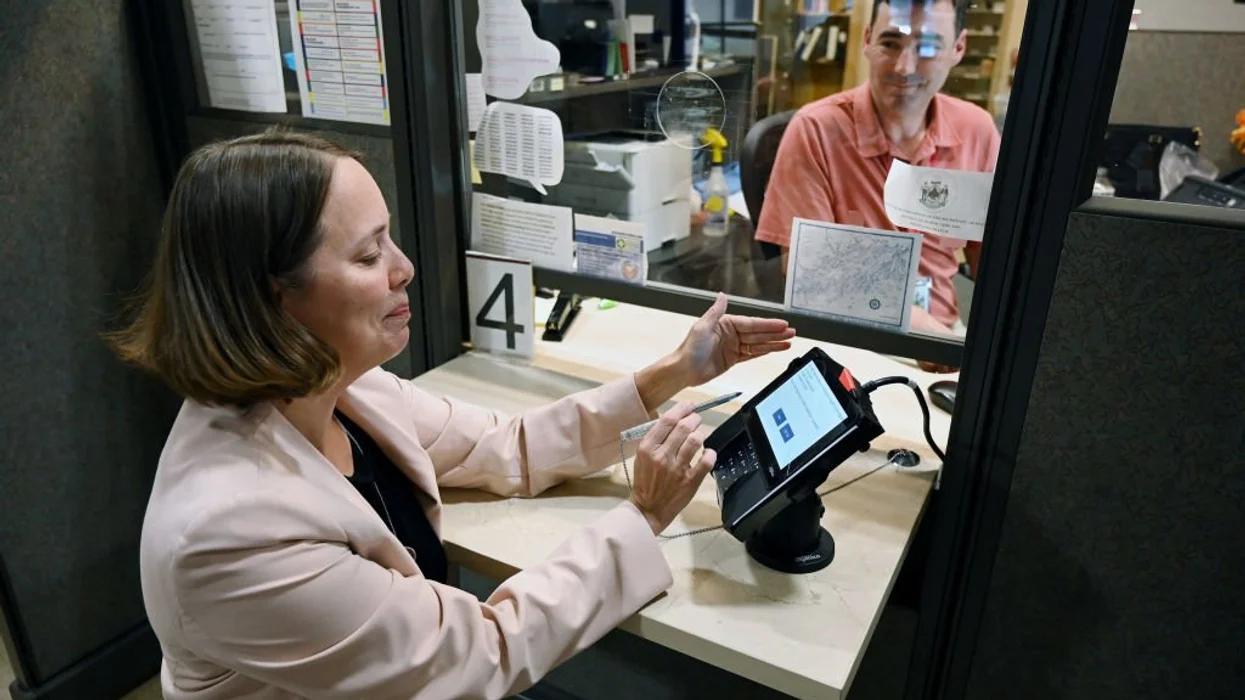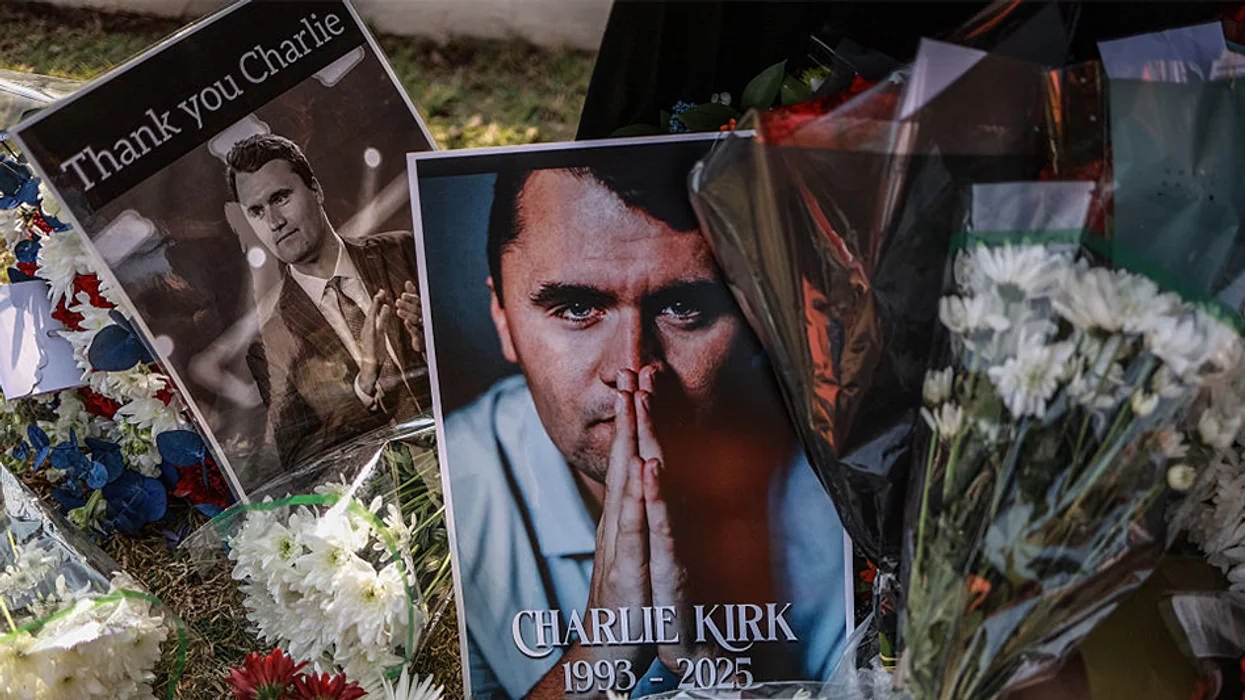Environmentalism is a catchall phrase that has come to mean reducing human impact on the planet.
Its most recent elevation to political superiority had its origins in a Rachel Carson book published in 1962, "Silent Spring," in which she argued that the ubiquitous pesticide, DDT, was accumulating in our environment causing the thinning of the eggs of birds resulting in fewer bald eagles. It was also accused of increasing cancer risks in children.
The discovery of DDT earned a Nobel Prize in 1948 for Swiss scientist, Paul Hermann Muller. It virtually eliminated malaria, which was a leading cause of death in the world.
 Diane Seresona, second left, is overwhelmed by grief as she sees the body of Prudence Seresona, 27, who just passed away from Malaria at the makeshift camp for internally displaced people set up in the airport in Bangui, Central African Republic, Friday Dec. 13, 2013. Over 30,000 are believed to seek refuge around the airport. Elsewhere in town, French troops backed by an helicopter traded fire with unidentified assailants as France's Defense Minister Jean-Yves Le Drian arrived in Bangui. More than 500 people have been killed over the past eight days in sectarian fighting in Central African Republic. (AP Photo/Jerome Delay)
Diane Seresona, second left, is overwhelmed by grief as she sees the body of Prudence Seresona, 27, who just passed away from Malaria at the makeshift camp for internally displaced people set up in the airport in Bangui, Central African Republic, Friday Dec. 13, 2013. Over 30,000 are believed to seek refuge around the airport. Elsewhere in town, French troops backed by an helicopter traded fire with unidentified assailants as France's Defense Minister Jean-Yves Le Drian arrived in Bangui. More than 500 people have been killed over the past eight days in sectarian fighting in Central African Republic. (AP Photo/Jerome Delay)
In response to Carson’s theory, politicians acted swiftly to save eagles and children. DDT was outlawed. This caused politicians to feel good, but it also contributed to the return of malaria, particularly in poor nations.
Millions of deaths later, here is what we know.
1. In 2010 alone nearly 220 million people were infected with malaria and 660,000 died, mostly in Africa.
2. After 25 years and 50 million preventable deaths, The World Health Organization has reversed its position and is telling those living in areas at risk of malaria to paint the inside walls of their home or hut with DDT.
In the 1970s, as new technologies allowed us to study more of our planet, it was noticed that the ozone layer in the stratosphere above Antarctica thinned at times. It was argued that less ozone allowed for more ultraviolet rays to reach the earth increasing our risk of skin cancers.
Scientists concluded that the chlorofluorocarbon (CFC) used in producing freon for coolants used in air conditioning was the cause. They said that chlorine that escaped from the CFC molecule rose into the stratosphere and reacted with the ozone causing its depletion.
Politicians acted! In 1987, 25 nations signed the Montreal Protocol to protect the ozone layer. They outlawed freon.
 Thick smog hangs over Hong Kong on January 5, 2014. Hong Kong on December 30, 2013 launched a new air quality health index, the first in Asia to use the system, in its ongoing battle to combat air pollution, with the new index measuring the combined readings of four common pollutants -- sulphur dioxide, nitrogen dioxide, ozone and particulate matter. AFP PHOTO / ALEX OGLE
Thick smog hangs over Hong Kong on January 5, 2014. Hong Kong on December 30, 2013 launched a new air quality health index, the first in Asia to use the system, in its ongoing battle to combat air pollution, with the new index measuring the combined readings of four common pollutants -- sulphur dioxide, nitrogen dioxide, ozone and particulate matter. AFP PHOTO / ALEX OGLE
Millions of people throughout sub Saharan Africa and Southeast Asia starved from having no way to preserve food. Millions more died from eating rancid meat.
Billions of dollars and millions of deaths later, here is what we know.
1. The ultraviolet rays that are filtered out by ozone – UV-B – are not the rays that cause skin cancers. The rays, that do affect skin - UV-A – are unaffected by ozone filtration.
2. Ozone is not a chemical reaction, but a result of atmospheric dynamics.
The latest human insult to our planet is the fossil fuel we burn to produce energy. The resultant CO2 traps heat in the atmosphere which, we are told, endangers the future of the planet. Secretary of State John Kerry instructs us that climate change is the “world’s most fearsome destructive weapon.”
This scare was built on the same alarmism as the ozone hole. Dr. Will Happer, a Princeton physicist wrote “The Montreal Protocol to ban freons was the warm-up exercise for the IPCC. Many current IPCC players gained fame then by stampeding the U.S. Congress into supporting the Montreal Protocol. They learned to use dramatized, phony scientific claims like 'ozone holes over Kennebunkport'” (President Bush Sr.’s seaside residence in New England). Happer added, “the notion that congress can do anything about climate is laughable.”
In order to scare children, polar bears have been declared at risk and placed on the endangered species list.
This is another political scam based not on science, but on computer models and fear. Politicians are prepared to do what politicians do. They will act!
 In this Dec. 6, 2007, file photo, Oxfam activists wearing polar bear costumes stage a demonstration outside the venue of the U.N. climate change conference in Nusa Dua, Bali island, Indonesia. (AP/Dita Alangkara, File)
In this Dec. 6, 2007, file photo, Oxfam activists wearing polar bear costumes stage a demonstration outside the venue of the U.N. climate change conference in Nusa Dua, Bali island, Indonesia. (AP/Dita Alangkara, File)
We will have to reduce our energy consumption, walk and bike more and take public transportation. We will be required to transfer trillions of dollars from developed nations to poorer nations.
On the precipice of spending trillions of dollars, here is what we know.
1. The computer models worshipped in this Church of Environmental Salvation cannot duplicate the known climate of the past 6,000 years. Do we trust them to predict the future?
2. The planet has experienced times when the CO2 levels were 50 times greater than the present level and survived just fine.
3. There are about 20,000 to 25,000 polar bears in the Artic region today as compared with 5,000 to 10,000 in the 1950s.
4. IPCC official Ottmar Edenhofer, speaking in November 2010, advised that: “…one has to free oneself from the illusion that international climate policy is environmental policy. Instead, climate change policy is about how we redistribute de facto the world’s wealth…”
Those in Sub-Saharan Africa live lives that are brutal and short and do not need us lecturing them about the dangers of coal fired power plants. They need a source of energy to improve their lives with the chance to transport some fresh water and perhaps a CO2 molecule or two so that they can grow a plant to eat. In exchange they might reintroduce us to the life saving wonders of DDT.
John Linder served in Congress for 18 years from Georgia. He and his wife, Lynne, have retired to a farm in Northeast Mississippi. He can be contacted at: linderje@yahoo.com
–
TheBlaze contributor channel supports an open discourse on a range of views. The opinions expressed in this channel are solely those of each individual author.


 Diane Seresona, second left, is overwhelmed by grief as she sees the body of Prudence Seresona, 27, who just passed away from Malaria at the makeshift camp for internally displaced people set up in the airport in Bangui, Central African Republic, Friday Dec. 13, 2013. Over 30,000 are believed to seek refuge around the airport. Elsewhere in town, French troops backed by an helicopter traded fire with unidentified assailants as France's Defense Minister Jean-Yves Le Drian arrived in Bangui. More than 500 people have been killed over the past eight days in sectarian fighting in Central African Republic. (AP Photo/Jerome Delay)
Diane Seresona, second left, is overwhelmed by grief as she sees the body of Prudence Seresona, 27, who just passed away from Malaria at the makeshift camp for internally displaced people set up in the airport in Bangui, Central African Republic, Friday Dec. 13, 2013. Over 30,000 are believed to seek refuge around the airport. Elsewhere in town, French troops backed by an helicopter traded fire with unidentified assailants as France's Defense Minister Jean-Yves Le Drian arrived in Bangui. More than 500 people have been killed over the past eight days in sectarian fighting in Central African Republic. (AP Photo/Jerome Delay)





